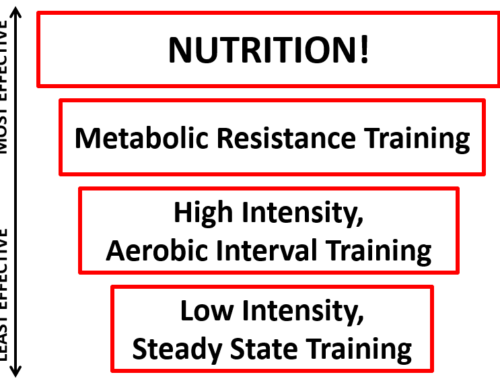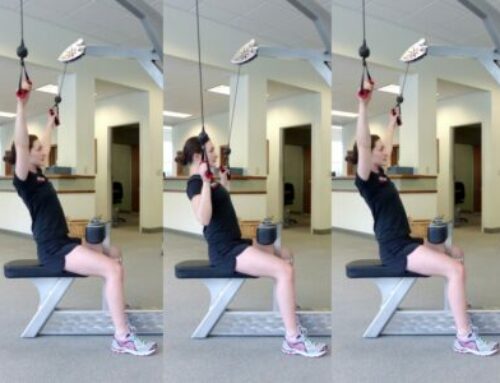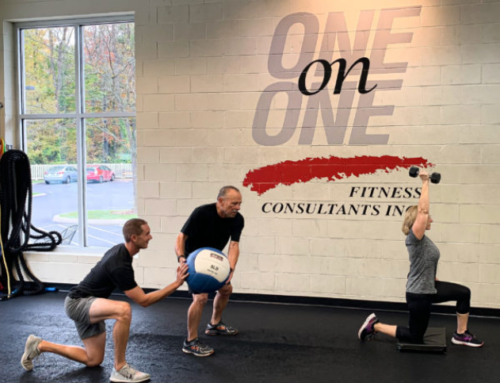
Back to Basics
If we aren’t vigilant with our exercise, like most self-improvement endeavors, we can backslide. Proper form, appropriate intensity and regular frequency are exercise variables that can all begin to drift. As we begin the New Year, One on One’s Focus Point of the Week will address the most basic of these variables: Proper Form.
Failing to exercise with proper form will, at best, feed dysfunctional movement and, at worst, lead to injury. This alone is reason enough to invest ourselves into knowing and practicing proper form while training.
The “Back to Basics” Focus Point of the Week series teaches and reinforces the most important concepts to help you exercise safely and effectively.
SETUP AND ENDPOINTS
By: The One on One Team
Last Updated: 1/28/24
Let’s start our Back to Basics series with “Setup and Endpoints.”
Setup refers to how you position your body prior to beginning an exercise. It is often, but not always, identical to the initial endpoint of an exercise. Safety and effectiveness require starting every exercise in proper alignment.
Endpoints define the safe and effective range of motion for a specific movement. They are the transition points where a force is decelerated in one direction, then accelerated in the opposite direction.
An individual’s initial setup and exercise endpoints are determined by a number of factors:
- Joint mobility
- Joint Stability
- An individual’s ability to control the range of motion (i.e. motor control)
Each of these factors are slightly different for each individual and will change over time as your movement capabilities improve (i.e. squat depth). Most importantly, you must respect these endpoints. The benefits of increasing your range of motion may not justify the associated risks such as injury.
Common Movement Breakdowns
While setup and endpoints are different for every exercise, we have noticed distinct breakdowns that can lead to faulty movement patterns and potential injury:
- Shrugged shoulders: To ensure proper muscle activation, be sure that your shoulders are down from your ears before you begin an exercise.
- Feet excessively turned out: Be aware of your foot positioning. Provided your knees are tracking properly, a slight toe-out position is appropriate.
- Uneven body weight distribution: Uneven distribution between feet and/or having the body weight shifted too far back on the heels set the movement up for faulty patterns. (Note: shifting the body weight forward subtly over the midfoot automatically activates deep spinal stabilizers.)
- Pelvis rotated excessively forward (creating low back hyperextension) or pelvis rotated excessively backward (creating low back flexion): Either of these can lead to low back strain or injury. Keeping your pelvis in a neutral position encourages the spine to be in a neutral position.
- Lack of overall tension: Avoid “loosey-goosey” movements by keeping a small amount of tension throughout the body (especially the core) during all exercises.
- Drifting through endpoints: This may be the most common breakdown we see. Once you have established an appropriate range of motion by using proper endpoints, respect them!
These breakdowns may occur due to muscular imbalances that can be addressed through corrective exercise, or they may occur because of a simple lapse in focus. We must ensure the latter does not happen. If you start an exercise out of alignment, your endpoints and safety can be compromised.
Loaded vs. Unloaded Movement
Endpoints for functional or unloaded exercises are less strict. These movements look more like activities of daily living; their endpoints are determined by an individual’s abilities and the desired emphasis of the exercise. A medicine ball wood chop is a great example. Performing a wood chop with a big range of motion emphasizes completely different skills than a smaller, quicker wood chop.
Whether doing loaded or unloaded exercise, keep the following strategies in mind in order to track your endpoints and ultimately get the most out of your training:
- Use mirror feedback: Mirrors can provide you with the feedback necessary to check that you are setting up properly and executing the exercise with excellent form.
- Know your common breakdowns: Awareness is often half the battle. Know how your body tends to compensate and get in the habit of making subtle corrections.
- Use your body and surrounding environment: Use lines on the floor or your own body (e.g. feet shoulder width) to set yourself up correctly.
For this week and moving forward, focus on proper setup and knowing your endpoints for every exercise. Once you have a good setup, you can begin moving through appropriate ranges of motion safely with the intensity you desire!




